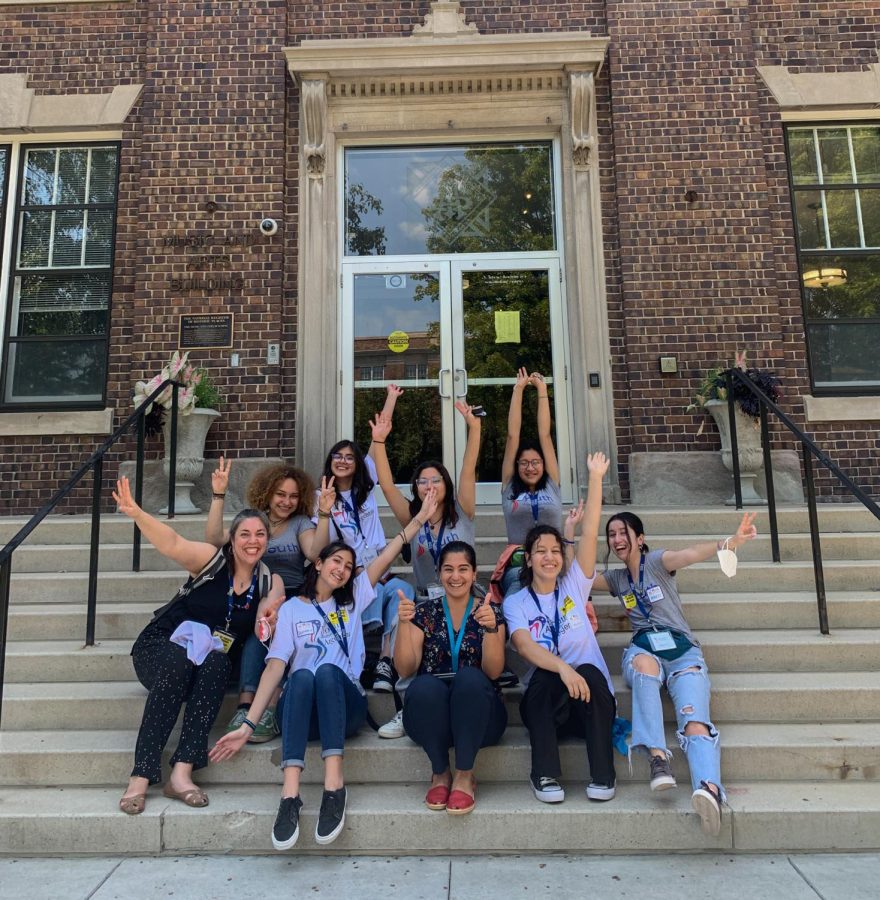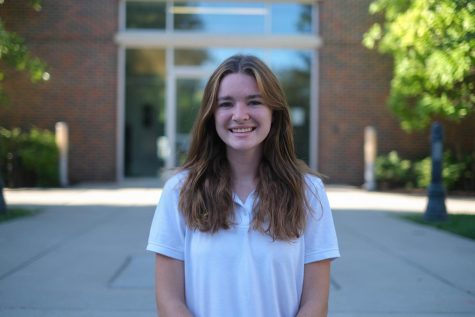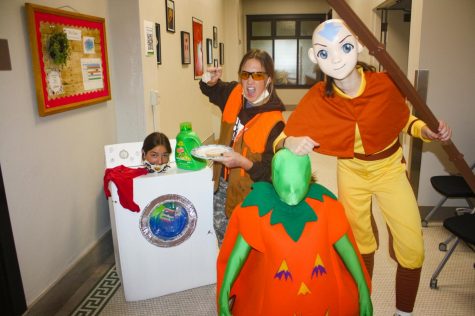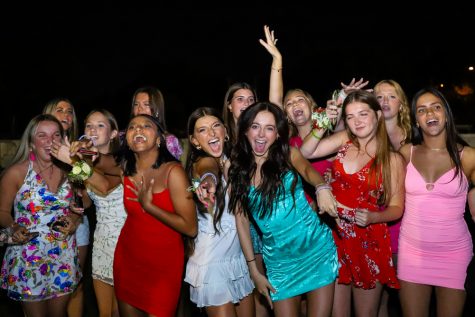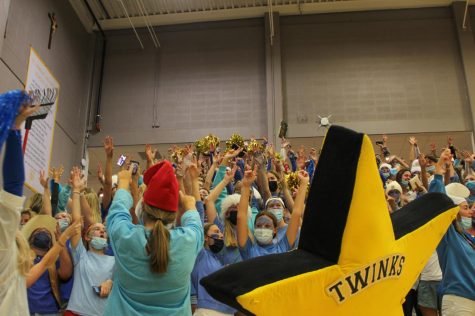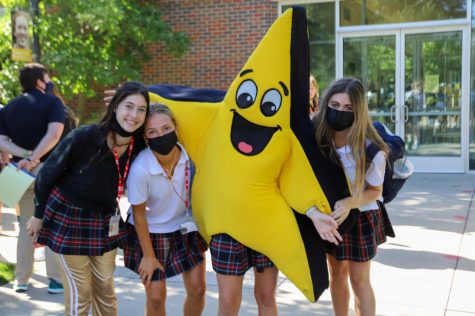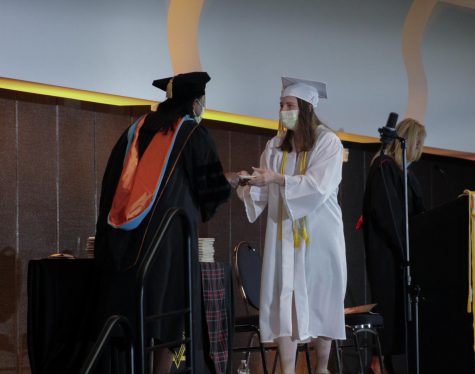STA Goes Global
STA welcomes foreign exchange students from Germany, France, Chile, and Argentina for the first time in three years.
October 10, 2022
The typical American high school experience is synonymous with bold, cinematic movie scenes: the big football game or students performing a choreographed dance through the hallway. These can become the stereotypes that foreign countries use to describe the U.S., especially for teenagers who participate in foreign exchange student programs. These programs give students and their host families the opportunity to explore new countries and culture.
Due to the COVID-19 pandemic, STA has not been able to have foreign exchange students on campus since 2019. This year, foreign exchange students have returned, hailing from France, Germany, Chile and Argentina.
Foreign exchange students from Argentina and Chile visited Kansas City for one week through a program called Global Ties. Senior Ava Martinez was a youth ambassador for the trip and spent time with the students at dinners and events with the goal of showing them Kansas City culture. Unlike most exchange programs, these youth ambassador trips are centered around diplomacy and politics, preparing all those involved to be good global citizens. Martinez was surprised at the impressions the students had of the United States.
“You’d be amazed how many of them use “Glee”and “High School Musical” to base their assumptions on,” Martinez said.
Senior Sofia Fortin had the chance to host a foreign exchange student from Chile, Fiorella, throughout her school day. She also spent a lot of time with Mika, another Chilean student. Fortin was interested in finding similarities between U.S. and Chile pop culture.
“I was able to talk to Mika about Harry Potter, I was asking all about “Twilight,” “Hunger Games,” team Edward, team Jacob, team Peta, etc.,” Fortin said. “They like their own pop culture as well, but it was cool to see the things that are international.”
Senior Georgia Kerrigan agreed that the foreign exchange students she interacted with were not all that different from American students.
“They all seemed like any other high schooler I’d met,” Kerrigan said. “If the accent wasn’t a giveaway, I probably wouldn’t have known that they were from a different country because they were all interested in the same stuff as me and we were able to carry on conversations and understand what the other was talking about. We use a lot of the same slang. They’re pretty much exactly the same as us.”
One big difference the Chilean students noticed between American and Chile high schools was the school spirit.
“They really liked the school spirit,” Fortin said. “They love Twinks, they love Spirit Club and all their costumes and everyone going around and the involvement, the fun aspects of it, because it didn’t seem like they have many events at their schools like that.”
Kerrigan mentioned other surprising differences including the lack of single-gender education and the notable absence of school dances in their countries.
“A lot of those traditions, they’re like, ‘that’s so cool, I wish we could go to one of those, they just don’t do that here,’” Kerrigan said.
According to Kerrigan, the Chilean and Argentinian students view school in the U.S. as more laid back than in their home countries, with looser uniform policies and more social opportunities.
STA also welcomed five French foreign exchange students and two chaperones from Le Puy France, including Guillemette and Gabrielle.
Similarly to schools in Chile and Argentina, there are no single-gender schools in France and no uniforms in the schools back in their home country. Guillemette and Grabrielle shared their excitement at getting the chance to explore a new country and culture.
“We were very excited to go to school in the U.S.A.,” Guillemette said.
Gabrielle shared this sentiment.
“We waited for two years, so it was most exciting to come here,” Gabrielle said.
Both girls expressed that although they had never experienced anything like the environment of the all-girls education at STA, they preferred it.
The French students also got to experience a Kansas City Royals baseball game.
“The mood of every person who was very excited to go to the game was incredible and it was the first time we ever went to a baseball game,” Guillemette said.
Gabrielle expressed awe at how big everything in America was in comparison to France. But the biggest culture shock for them both was the air conditioning.
“The environment, the air conditioning of the buildings and the shops, of the houses; in France, we don’t have air conditioning like that in every house, not in my house,” Guillemette said.
During their stay, the French students also made a trip to St. Louis to tour the mother house of the Sisters of St. Joseph and speak with the Sisters.
“It was very interesting to talk with the Sisters of St. Joseph and they were very open-minded,” Guillemette said.
In addition to her experiences with the Sisters, Guillemette appreciates the experience her host family was able to give her during her time here.
“My host family was very good; there are things that we discover a lot here and in our country, we know our country, it’s not new for us; here everything is new so it’s very exciting for us,” Guiemette said.
Despite the excitement of experiencing new things, Guillemette still misses some things about France.
“[I miss] my friends and family, and maybe the bread,” Guillemette said.
Overall, the exchange students said they are very grateful to have visited the U.S. and wish to come back to explore more cities in the future.
“We are very happy; we are thankful for the hospitality in this school and in our families,” Guillemette said.
STA also recently welcomed sophomore Clara Stinner, who is a foreign exchange student from Germany. She made her way to the U.S. through applying to a German foreign exchange program, and her host family found the U.S. program, ISE (International Student Exchange), to connect with her. She is staying for the longest of all the exchange students this year, a whole semester, from Aug 10 to Dec 20. Stinner reminisces on her first impressions of the U.S.
“Everything is huge; everything in the airport was huge, and there was so much going on, it was crazy,” Stinner said. “And everyone’s nicer. If you go to a restaurant, the servers talk to you; they start conversations with you and we don’t have that in Germany.”
Similar to the Chilean students, Stinner also noticed the difference between German and American high schools in regard to school spirit and sports.
“The sports events [in America], there’s always something going on as far as sports seasons go,” Stinner said. “We don’t have sports teams at our school or at any school in Germany.”
She also appreciates the variety of classes students can take in the U.S. compared to Germany.
“Here you can choose algebra or geometry or calculus, and in Germany you just have maths,” Stinner said.
Along with the school curriculum, Stinner was impressed by American food, especially our school lunches at STA.
“The STA lunch is crazy good; to have a drink, a snack and then fresh meals, that’s crazy,” Stinner said.
According to Stinner, the lunch in Germany doesn’t compare.
“It doesn’t taste that good, you don’t have all these extra things; [here] you can pick extra snacks, extra drinks, wraps, yogurts, we don’t have that; we just have one hot meal, maybe two, and it doesn’t really taste that good,” Stinner said.
To fully experience the American food culture, Stinner made a Snapchat story where she reviews foods she’s trying for the first time.
“My least favorite was Cheez-Itz,” Stinner said. “Everyone told me they were really good and I was really excited to try them and then I tried them and it wasn’t good. My favorite is Rice Krispie treats and beef jerky.”
What amazed her the most was Costco.
“Costco is crazy,” Stinner said. “I’ve been there once; it was just a whole totally different thing, it was the craziest thing ever. Everything is just massive. I was in the chip aisle and it was just huge. I’ve never seen something like that my entire life. And my host dad Ryan, he comes home with this huge sack of just Ziplock bags, five packs of them and it’s like, ‘what do we need those for?’”
The biggest culture shock for Stinner was how much Americans use cars compared to Germans. Something she misses is public transportation.
“In Germany I don’t use the car, I’m not allowed to drive, obviously; we’re allowed to drive at age 18, so I use the car with my mom probably once every two to three weeks to go to the grocery store or something,” Stinner said. “My mom uses it [the car] to go to work and the grocery store and that’s it.”
Tomorrow evening, Stinner will be attending Teresian and has a date to the dance. She is very excited about this new experience because there is only one school dance when students graduate high school in Germany and from her perception, school dances are a big part of American high school culture.
Overall Stinner is determined to make the most of her stay.
“The most exciting thing is that everything you do here is exciting, because it’s a different continent and it’s a whole different thing,” Stinner said.
“Everything you do is exciting: going to the grocery store, it’s exciting. Everything you see is new, which is really nice. I’m going to miss that and just seeing new things. When I go back to Germany, it’s gonna be my old boring life. My life wasn’t boring in Germany but I’m gonna go get back there and be like ‘oh, I’ve seen everything.’ Here I can find stuff that I’ve never done before, which is really nice.”



